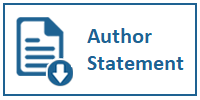Crisis Communication on Yayasan Dunia Mega Bintang's Cyber Public Relations
Case Study to Aurra Kharisma's Cyberbullying
DOI:
https://doi.org/10.31937/ultimacomm.v14i1.2572Abstract
This study examines crisis communication at Yayasan Dunia Mega Bintang in terms of cyber public relations activities. The foundation underwent cyberbullying to Aurra Kharisma in the form of hate comments on its social media account. Therefore, crisis communication is required to maintain the foundation's image. The theories used are crisis communication, situational crisis communication theory, public relations, dan cyber public relations. With a qualitative approach and case study research type, this study uses in-depth interviews, documentation, and qualitative content analysis method. The results indicate that the foundation used the four stages in public relations strategies in crisis communication. Fact finding strategy helped to figure the cause of crisis which is negative comments on social media and the foundation took a defensive stance. As communication facilitators, the team planned dynamic programs supported by social media planning in line with the Situational Crisis Communication Theory. Communication strategy is divided into two types by implementing deny, diminish and bolstering strategies. Evaluation strategy, both internal and external is rarely conducted formally although it is important to maintain the continuity of crisis communication strategy. Based on the results, the researcher suggests the foundation should construct a specific social media team and establish a stronger boundary with pageant lovers as these factors may cause a crisis. The usage of open, dialogical, and participatory social media can serve as a model for crisis communication. The message's speed and accuracy are crucial factors to consider and is necessary to have a consistent approach to presenting positive information. Evaluation is also important to maintain reputation.
Downloads
Downloads
Published
How to Cite
Issue
Section
License
Ultimacomm Jurnal Ilmu Komunikasi allows readers to read, download, copy, distribute, print, search, or link to its articles' full texts and allows readers to use them for any other lawful purpose. The journal allows the author(s) to hold the copyright without restrictions. Finally, the journal allows the author(s) to retain publishing rights without restrictions
1. Authors are allowed to archive their submitted article in an open access repository
2. Authors are allowed to archive the final published article in an open access repository with an acknowledgment of its initial publication in this journal














